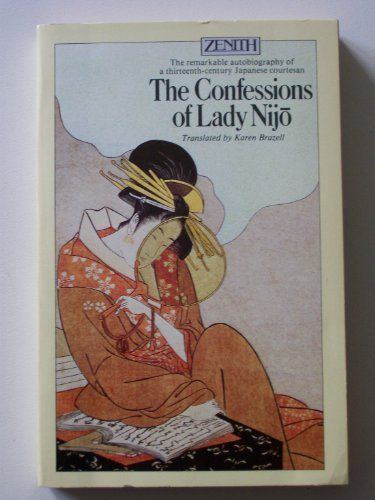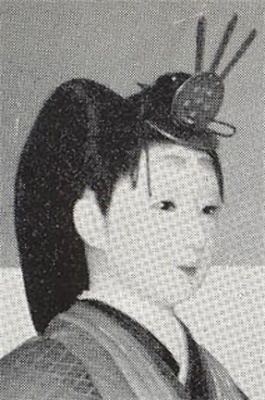Name Lady Nijo | ||
Top Girls Lady Nijo, Pope Joan, and Dull Gret Monologue
Lady Nijō (後深草院二条, Go-Fukakusain no Nijō) (1258 – after 1307) was a Japanese historical figure. She was a concubine of Emperor Go-Fukakusa from 1271 to 1283, and later became a Buddhist nun. After years of travelling, around 1304–07 she wrote a memoir, Towazugatari ("An Unasked-For Tale", commonly translated into English as The Confessions of Lady Nijō), the work for which she is known today, and which is also the only substantial source of information on her life.
Contents
- Top Girls Lady Nijo Pope Joan and Dull Gret Monologue
- Top Girls Lady Nijo and Pope Joan monologues
- In popular culture
- References
Lady Nijō was a member of the Koga family, a branch of the Minamoto clan descended from Emperor Murakami. Her father and paternal grandfather held important positions at the imperial court, and many of her relatives and ancestors had high reputations for their literary abilities. Her real name does not survive. The name "Nijō" was given to her at the court: it was common practice at the time to designate court ladies by street names, and "Nijō" ("Second Avenue") designates a high rank. According to the Towazugatari, Emperor Go-Fukakusa was in love with Nijō's mother, Sukedai. However, she died shortly after Nijō was born, and Go-Fukakusa turned his affections to Nijō. She was taken to the court at the age of four, and was subsequently raised there. The Towazugatari begins in 1271, when Nijō, aged 14, is given by her father to Go-Fukakusa as a concubine.

The narrative proceeds to describe Nijo's life at the court, which was plagued by numerous troubles. Her father died when she was 15, and her relationship with the emperor was strained from the beginning, because she took several other lovers over the years, including one whom she knew before becoming a concubine. Matters were complicated further by Nijō's pregnancies: the only child she bore to Go-Fukakusa died in infancy, and the other three children she had were not by the emperor. Go-Fukakusa's consort, Higashi-nijō, was greatly displeased with Nijō's behaviour and Go-Fukakusa's apparent affinity for the concubine. Ultimately, it was due to Higashi-nijō's request that Nijō was expelled from the court in 1283.

Nijō's fate is revealed in books 4 and 5 of Towazugatari. Like many women in Medieval Japan whose lives met with unfortunate circumstances, Nijo became a Buddhist nun. She traveled to saсred and historical places, returning to the capital regularly. Book 4 begins in 1289, skipping several years (thus leading scholars to believe that some material may be missing); book 5 skips some more years and describes Nijō's grief at Go-Fukakusa's death in 1304. Towazugatari ends in 1306, and nothing is known about what happened to Nijō afterwards or when she died.

Nijō's autobiography did not enjoy wide circulation. A single 17th-century copy was discovered in the 20th century, with several gaps in book 5, noted by the scribe. The scholar who found Towazugatari was Yamagishi Tohukei. The book was published in 1950, with a complete annotated edition following in 1966. There were two English translations:
Top Girls Lady Nijo and Pope Joan monologues
In popular culture
Lady Nijo appears as a character in Caryl Churchill's play Top Girls.

